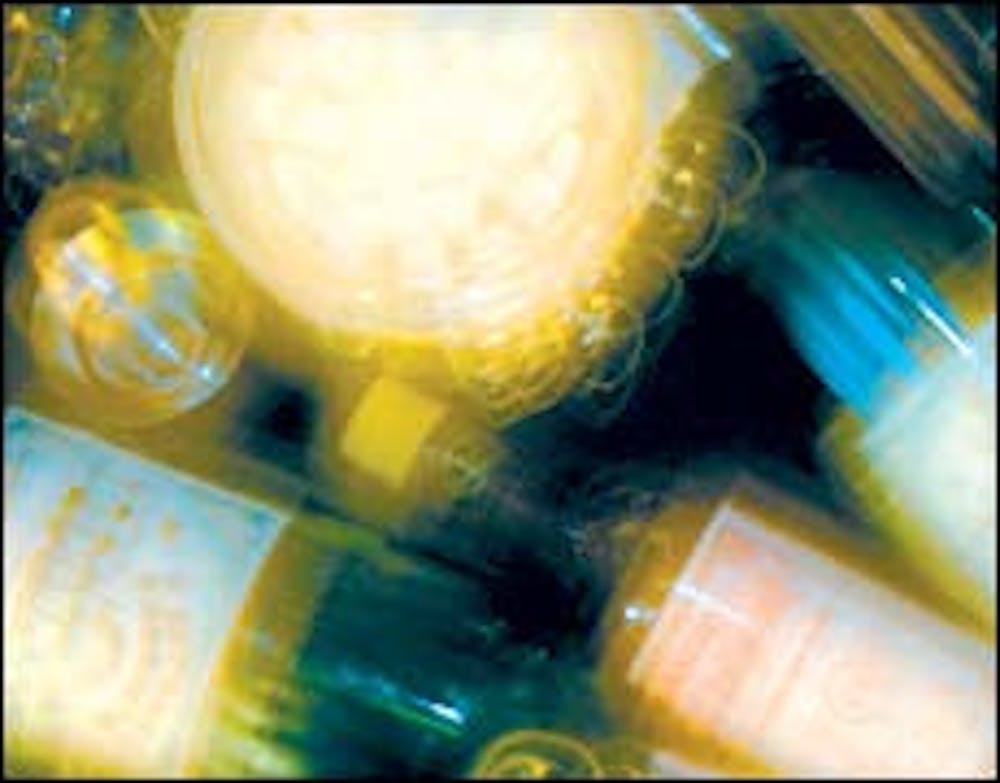To hear Hollywood tell it, just a few swigs of absinthe is enough to send you on a hallucinogenic trip.
Then there's Vincent Van Gogh. He cut off his ear after drinking it.
Many wild stories and myths surround the beverage, but some locals say it's not as dangerous or extreme as others think.
Mesa resident Patrick O'Connor, a 32-year-old bartender, says while the active ingredient in absinthe (wormwood) releases a chemical that has a molecular structure similar to cannabis, the trace amounts found in most absinthes are not enough to produce much of an effect, let alone cause hallucinations.
O'Connor says the alcohol produces most of absinthe's effects -- not surprising, considering how much it holds. Most genuine absinthe products range from 145 to 170 proof, which translates to roughly 73 to 85 percent alcohol by volume.
"You will probably die of alcohol poisoning before you see a green fairy," O'Connor says.
He says he bought two bottles from a Swiss Web site and that absinthe is hardly more potent than a regular cocktail, if used in moderation.
O'Connor says that a single bottle lasts him a long time, since it is so strong and expensive. It took O'Connor about 10 months to empty his first bottle.
"The first bottle went pretty quickly because all of my friends wanted to try it, and it was something new," he says.
After the novelty wore off, it went toward various recipes that call for absinthe in small amounts to add flavor, such as a Sazerac, a drink that consists of two ounces of cognac, one ounce of simple syrup, bitters and a drop of absinthe.
"The reason a lot of writers and artists used to hallucinate when they drank absinthe is because they mixed it with opiates," O'Connor says. "About 90 percent of people who say they have hallucinated after drinking absinthe are full of shit. It's a placebo effect and it's all in people's heads."
In addition, O'Connor says the media's portrayal of absinthe is urban legend.
"People talk about absinthe parties, and that's just a joke," he says. "What they're drinking is not real absinthe, because it's illegal to sell it here."
He also says that it's almost a blessing that absinthe is illegal to sell in the United States.
"Even though I'm very liberal about most things, it's probably for the best that a lot of people here don't know how to get it," he says. "I'd worry that if it were legal at the same strength it's at now, people would abuse it, especially college students."
However, O'Connor says that absinthe is fairly easy to get if you know the right places to look.
"I spent about 15 minutes looking for absinthe to buy online, and it gets delivered within two weeks," he says. "I look for the one with the highest wormwood content, and it ends up costing me about $250. The less wormwood content, the cheaper it is."
Some of the best absinthe comes from Switzerland and the Czech Republic, O'Connor says.
O'Connor expands on why absinthe is so expensive.
"Europeans know that Americans can't get it here, so they can charge whatever price they want. And many people are so intrigued by it that they are willing to pay high prices for it," he says.
O'Connor also warns against Web sites that offer directions for how to make absinthe.
"It's meant to be enjoyed, but homemade absinthe tastes like garbage," he says. "If you really want to get high that quickly, you might as well go all the way and just shoot up."
Psychology sophomore Devon Jones says she has tried absinthe a few times and that although it is a different kind of buzz, it is definitely not a hallucinogenic.
"It was a more hyper, alert drunk, and my dreams were more vivid all three times, but I didn't see anything that wasn't there or anything," she says.
She says that she wasn't prepared for the peppery sensation in her mouth, or the strong licorice-like aftertaste.
"It was like Jaeger times 12," Jones says.
Reach the reporter at kate.kliner@asu.edu.




